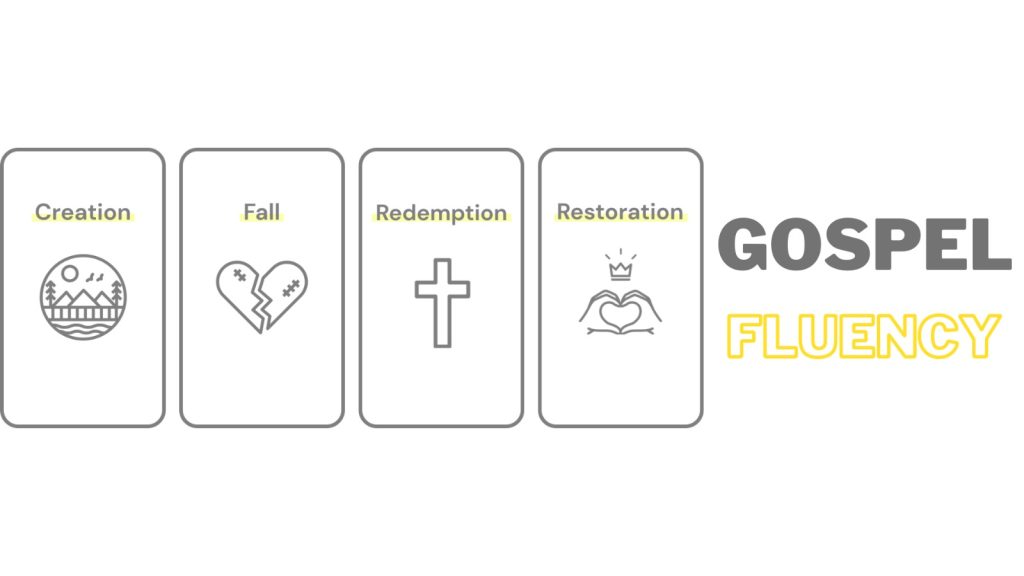We might know what the Gospel is and even acknowledge the importance of growing in our Gospel fluency (see article to learn more), but in order to grow in it, we must put it into practice and incorporate it into our daily lives. This is certainly not easy. It takes awareness of our thoughts and intentional practice. To become fluent in the Gospel, like any other language, requires commitment to grow in it.
The Fruit-to-Root tool is one of the tools that can help us to grow in our awareness of what’s in our hearts and then to turn and find truth in the Gospel. On a daily basis, one of the ways we can practice Gospel fluency for ourselves is by exposing our “unbelief” – that is, thoughts that consist of lies that are not true. We can expose these lies by first observing the fruits we’re experiencing. When we are not experiencing the fruits of the Spirit, then it shows that we are not living in the truth and power of the Gospel. The Fruit-to-Root tool helps us to trace the unhealthy fruits in our lives down to the unbelief in our hearts, and turn us back to God by repenting and declaring the Gospel truth so that we can live in faith and experience the fruits of the Holy Spirit.
What are some unhealthy fruits you might see? These can be anxiety, fear, anger, or even pride and complacency. You are simply not experiencing the fruits of the Holy Spirit.
From the unhealthy fruits that are identified, we can dig deeper into what these fruits show about what we believe about ourselves. For example, “I am not worthy of people’s forgiveness” or “My success and performance defines my identity”, etc. Sometimes these beliefs are things the world tells us we should believe in! Other times, we may know it’s not true, but from our fruits and how we responded to different situations in our lives, it shows what we truly believe.
From there, we need to dig deeper into what we believe God has or has not done for us, which eventually leads to who we believe God to be. These beliefs will usually end up being some false understanding of who God is. For example, “God is disappointed in me and will not forgive me” or “God is just someone I use for my own success”, etc.
Therefore, the turning point is through repentance. This is a decision to turn and change our minds from what we see ourselves believing toward what we see is true in the Bible.
We need to see our unbeliefs for what they are and turn back to God’s truths. We turn back to Him by identifying who the Bible says He is (by looking at the life, death, and resurrection of Jesus). For example, “God is loving and forgives me because Jesus died for my sins” or “God is the ultimate success because He gave me a new purpose and redefined ‘success’ based on Jesus’s victory over death”, etc. In other words, we identify the evidence for God’s character, which are the things we see He has done.
These things define who we are, and we can declare who we are because of Jesus. For example, we can say, “I am forgiven and loved by God because of Jesus!” or “My identity and purpose are to live for Jesus for what He has done for me.”
And finally, we can respond in light of these truths. For example, “Therefore, I choose to love and forgive others who wrong me” or “I choose to live to pursue the success of God’s kingdom rather than pursuing my own success.”
And life is a series of fruit-to-root moments when we learn to become aware of our unhealthy fruits and reflect deeper, repent and believe in what we know is true!
See the following PDF the steps of the tool and an example of someone going through the tool.

